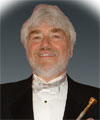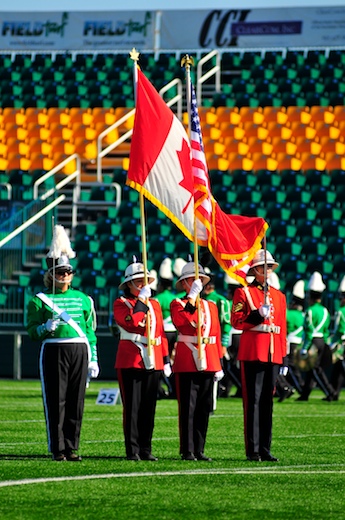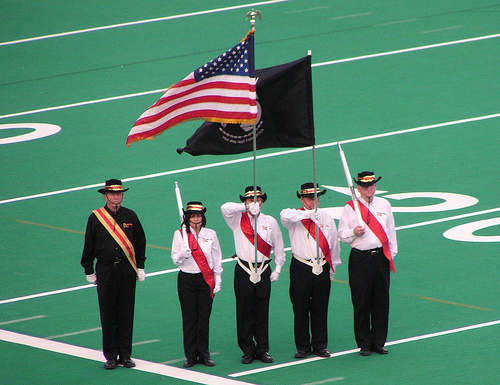Inside the Arc
“Abe, Charles and the Alumni”

This year marks the bicentennial of the births of two extraordinary individuals, each of whom represents a legacy and a point of view that has shaped modern times. Their relevance and influence are clear and undeniable: Lincoln reminds us of our heritage and a people’s need for leadership that is strong yet wise and compassionate. Darwin challenges us to understand our origins and the imperative to “adapt or die”.
Drum Corps as a subspecies of performance art has continued to evolve. Most of the changes have been positive and have served to strengthen the notion of “survival of the fittest”. Surely today’s corps are the best they have ever been, in many respects. Performance levels and techniques are at an all-time high, equipment is better than ever and so is instruction. But there is a bit of a disconnect, and this is where Abe and Charles come in.
An oft repeated complaint from older fans goes something like this: “These kids just don’t appreciate what real drum corps was all about”. The question must be asked then, “How are they to find out?”
“Survival of the fittest” has whittled corps numbers to a precious few. (Some blame DCI. I’d say the Viet Nam War and its legacy are a better explanation, but we’ll save that for another discussion.) If the survivors are unaware of their history, their very heritage, who is going to tell them? The Alumni, that’s who.
I recently rehearsed a very fine DCI finalist brass section. Part of the regimen involved flexibility exercises built on the “open” notes of the horn. I demonstrated these on a WWI US Infantry valve-less bugle. My students were positively fascinated by its history, and everyone wanted to play this wonderful antique. Far from being disinterested, they were eager to know every detail. They were beginning to, in Twyla Tharp’s words, “earn their ancestors.”
I can’t be the only one who has noticed that the Color Presentation is making a comeback. The Inaugural Parade and accompanying pomp and the recent Lincoln celebration at the Capitol are only the latest manifestations. At the latter, I was pleased to see the honor guard at “high mark time”.

Toronto Optimists Alumni with Canadian national colors
DCA Alumni Spectacular ’08
Photo by Charlie Groh – Used with permission
Flags of all kinds have been ubiquitous for the past few years, but there is a subtle change of emphasis I think, away from a sign of military might and towards a symbol of collective community.
It should be noted that, in Lincoln’s day, when a bugler sounded “To the Colors” this was not an homage to the flag but a call to assemble the community under its banner. We are beginning to see this shift again and that can only be good for drum corps. Don’t expect the sudden appearance of the Stars and Stripes gliding down the 50 at DCI finals any time soon, (though it might very well bring down the house). But whenever any color guard anywhere waves a piece of fabric, it is connecting to the origins of that very moment, its “flag DNA”, if you will, and if we expect current corps performers to know and respect that, it is our obligation to point it out. We are, after all, the tribal elders, keepers of the flame. Alumni Corps members are “living history”, no less so than Civil War re-enactors in a Ken Burns documentary or the Army Old Guard at the Lincoln Memorial.
Indeed, there are some bona-fide Color Presentations to be seen, especially among the Alumni corps. And it’s my guess that parades are making a comeback, since it’s once again “cool” to be calling the community together for a common purpose, this time an economic one. Pageantry and ceremony are methods of building solidarity and it seems the current national leadership knows this.

“Living the History”
Captain Jack Sullivan commands the Park City Pride honor guard at the Barnum Festival ’08
Photo by Nanci Dunham – Used with permission
But who will march in these parades? It will be extremely difficult for the touring corps, and even the Cadets and Colts had a sizable number of alumni augmenting their numbers in Washington last month. It is the Alumni corps who will take on this task, though it’s not their only calling.
There are two more issues they must address, and these are not insignificant. The first is their own survival as on-going entities. All of them must strike a balance between nostalgia and relevance to insure an influx of new members as older ones cease performing. Drum Corps has never been about the individual, but about the group and if there is a valid purpose for the group to exist, then new members must constantly be added and their concerns accommodated.
The second issue is no less important, especially now. The good news is that the time is right for local, neighborhood corps to re-emerge. For many years, school band programs have filled the vacuum created by the disappearance of the parish, Fire Department and veteran’s organization corps. Currently there is a nationwide belt-tightening that will change all that for years to come. It’s time for the Alumni Corps to organize and maintain local drum corps at the elementary school level, just as their parents did for them, and the WWI vets did before that. After all, who knows better than a corps alumnus how vital that is to a young person?
Consider this a call “To the Colors”. Only real Drum Corps people will hear it.
Frank Dorritie is one of the legends of the activity .... a performer, instructor, arranger, adjudicator, and observer over the past 5 decades. Frank has been playing the bugle and trumpet since the 1960s, and has performed with artists like Billy Cobham and Maynard Ferguson. He has instructed and/or arranged for the Blue Devils, Cadets, Santa Clara Vanguard, Cavaliers, Chesterton and Tenri High Schools, the Bushwackers, Bridgemen and a host of others. His audio production honors include 9 Grammy Nominations, 2 Grammy Awards and membership in both the World Drum Corps and Buglers Halls of Fame. He is active internationally as a clinician and adjudicator, holds the DCA Soprano/Trumpet/Tenor Individual titles for 2003, 2005 and 2006. Frank also chairs the Department of Recording Arts at Los Medanos College. His popular brass method book, “Power and Endurance”, is available from Xtremebrass.com. The opinions expressed in this column are strictly those of the author.
Posted by Frank Dorritie on Friday, February 13th, 2009. Filed under Inside the Arc.
